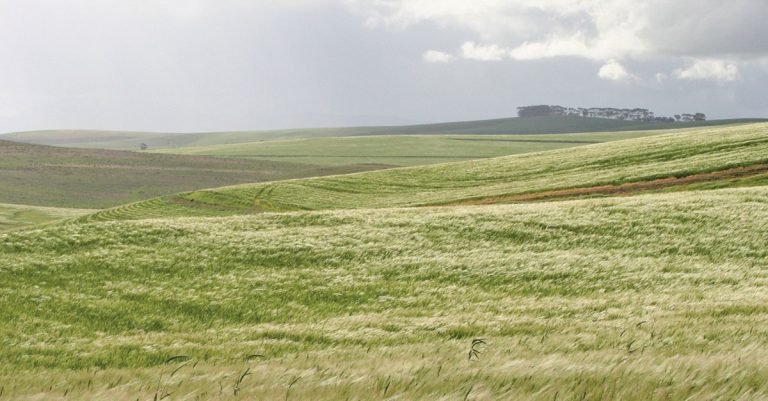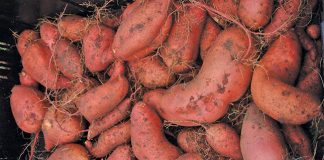
Photo: FW Archive
Nitrogen (N), in conjunction with the climate, is one of the most important determinants of grain yield. However, due to the relatively high cost of N fertiliser, especially in dryland production, farmers need to apply it as effectively as possible to ensure profitability.
This was the key message of Jacques Smith, an agronomist at agricultural product company Yara, who spoke at the recent annual SKOG Pre-Plant Information Day presented virtually and hosted by the Western Cape Department of Agriculture.
According to Smith, economical N fertiliser rates vary considerably across grain production regions due to the complexity of the soil N cycle. These rates also differ from year to year, from farm to farm, and even from one field to another on the same farm.
Nitrogen-use efficiency
The variation in N levels is linked to the concept of nitrogen-use efficiency (NUE). “To include all the NUE factors and ensure that profits are optimised, it’s important to approach nitrogen fertilisation more holistically,” explains Smith.
NUE concerns the relationship between total N input and N output. According to Smith, many indices can be used to determine the effectiveness of applied N. He considers the partial factor productivity (PFP) of applied N as the most important and practical index, adding that PFP is a measure of efficiency of input use that is commonly expressed as yield/unit input, such as kilograms of grain/kilograms of N.
“If you’re working, for example, on a constant yield of 4t/ha with a target protein and would like to increase NUE, applied nitrogen must decrease. The only way to do this successfully without penalising yield is to get additional nitrogen from the soil, and/or increase the efficiency of the applied nitrogen.”
He points out that there are a number of factors that affect soil N and NUE.
Soil fertility
Smith defines soil fertility as the soil’s chemical, physical and biological ability to optimise plant production in a sustainable way.
The relative acidity/alkinity of a watery solution (pH) also has a key role to play, he explains, as it influences several soil factors affecting plant growth, such as soil bacteria, nutrient availability and leaching, toxic elements, and soil structure.
“This [pH] has a direct impact on microbial activities in the soil. The microbes are responsible for the decomposition of organic matter, which is then broken down into carbon dioxide and the mineral forms of nutrients like nitrogen.”
Microbes prefer a neutral pH. “The mineralisable fraction of carbon and nitrogen increases at higher pH levels due to weaker bonds between organic matter and soil colloids.”
To achieve maximum N efficiency, a farmer should aim for a soil pH of between 5,2 and 6,3 (measured in KCl).
Balanced nutrition is another important aspect of soil fertility, explains Smith.
“Liebig’s Law of the Minimum states that yield is proportional to the amount of the most limited nutrient [available to the plant], whatever nutrient that may be.”
Current data suggest that less N fertiliser might be required for crops to reach rainfall-limited yield potentials and retain protein quality in soils with high background concentrations of phosphate, potassium and sulphur, or where these elements are applied as fertilisers.
Soil structure (the arrangement of its solid components and the spaces between them) is also crucial to its fertility and efficiency.
“A good structure provides better soil tilth. This leads to improved root and microbial activities, which mean that nitrogen delivery from the soil will be higher and nitrogen can [then] be absorbed more efficiently.”
He says that tillage practices, such as minimum tillage, where the soil is disturbed as little as possible, can contribute to improved soil structure. The more severe soil disturbance, the lower the levels of carbon in the soil become, which is an important indicator of soil productivity.
Nitrogen management
Nitrogen makes a vital contribution to yield from the beginning to the end of a wheat plant’s life cycle.
“Early nitrogen will add to yield through increased tillers and tiller bud numbers. Later applications of nitrogen can increase tiller survival, longevity of green leaf canopy (where the season allows) and grain number per head,” explains Smith.
He adds that the effect of N on the early stages of a plant’s life cycle should not be underestimated.
“The initial stage of a wheat plant is extremely important. This is the foundation phase, where the potential is being created. About 80% of the plant’s protein comes from nitrogen mobilised from the leaves.”
Smith suggests that between 60% and 70% of the total required N rate be applied during the leaf-emergence or vegetative phase.
“This approach enables the farmer to set up a yield potential and then to monitor seasonal conditions and match additional nitrogen to expected yield and target protein.”
If crop potential and seasonal conditions justify additional N-fertiliser applications, anything between 0% and 40% of the total required nitrogen rate can be applied from the flag leaf stage up to heading.
“Nitrogen management tools can play an important role during late fertiliser applications in improving the accuracy of nitrogen recommendations, and thus contributing to an improved NUE if applied at optimal rates.”
A number of N management tools are available, including the Minolta SPAD meter, the Yara N-tester, and refractometers, which can measure a crop’s N levels at different growth stages and thus provide recommendations on the need for a late N application. Foliar analysis can also be performed.
Smith emphasises, however, that while a tool can provide values, comprehensive research data should be available to support the interpretation of the measured values.
“Therefore evaluate each camp on the farm in terms of target yield versus actual yield. Also try to investigate where the possible problems lie.”
Smith advises that spread width be taken into consideration when applying N fertiliser.
“You can have the best tools to determine your nitrogen status, but if you don’t apply the physical product evenly where necessary, there will be huge losses in terms of nitrogen consumption, as well as a possibility of yield losses.”
Fertiliser application uniformity is described by the coefficient of variation (CV), which measures variation from the average application rate. According to Smith, desired maximum allowable CV is less than 20%.
He also advises farmers to make sure that the source of N they apply is scattered across the desired widths of the rows, and strongly recommends that standard test trays be used to determine this.
“The more holistically that nitrogen fertilisation is approached, the better the NUE. Therefore manage nitrogen as carefully as possible according to crop potential and nitrogen status by applying the right source at the right time,” he concludes.
Email Jacques Smith at [email protected].











